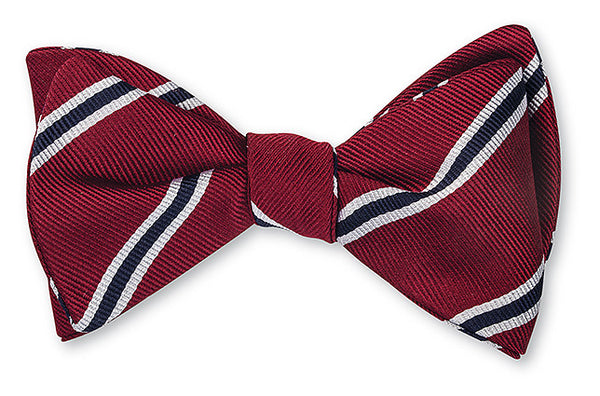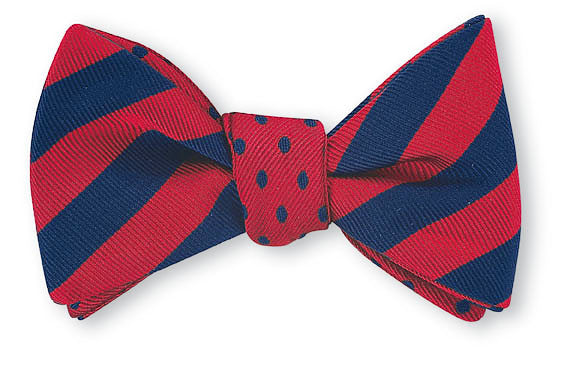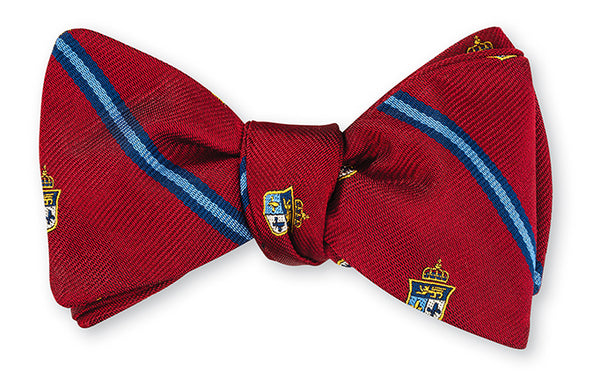Striped Bow Ties
One of the best ways to incorporate some diversity and pattern into your wardrobe is to become acquainted with stripes. Striped bow ties are always an excellent choice when looking for a way to make a statement with an outfit. Stripes are certainly considered a timeless look; however, there are also ways to achieve a bold take on this classic pattern. Various colors, textures, weight, and sizes of the striped patterns create the difference and uniqueness of each design. A striped bow tie is an exemplary choice for any gentleman who is seeking a quintessential look while making a striking statement. Shop R. Hanauer’s collection of striped bow ties and find the best look that suits your style:
The R. Hanauer Process
Each and every R. Hanauer tie is made by a talented team in our shop. Our bow ties are made by hand and made to order. The specific types of silk, cotton, linen, and wool fabrics for our products are always carefully selected by Randy and Randall Hanauer, our father-and-son team. We feature English and Italian silk from renowned international mills in our collections. When the order process has begun, our ties are cut by hand to begin the artistic creation of the product. As opposed to the straight of grain, our bow tie fabric is cut on a bias to produce the best-tying bow tie on the market. Cutting on the bias allows the pattern to be cut out at a 45-degree angle to produce the gentle stretch of the fabric for the ease of tying. A bias-cut lining is in each and every one of our bow ties to ensure that the structure and shape will always remain in its best condition. We are proud and dedicated to making American made bow ties, ties and cummerbunds in our hometown of Fort Mill, South Carolina.
History of Stripes
Believe it or not, striped clothing and accessories were not always accepted with open arms as a classic staple for an individual’s wardrobe. In fact, in Medieval times, stripes were considered to be the “devil’s cloth,” and the black and white striped patterns were viewed as a form of punishment that distinguished prisoners, prostitutes, and criminals from the rest of the community.
It wasn’t until Queen Victoria rebelled by dressing her son in a striped suit for a royal boating excursion that the striped pattern became not only accepted, but also associated with marine expeditions and the sea. This established a new, more accepting view of the striped pattern during the turn of the nineteenth century.
The classic navy blue and white striped pattern became heavily associated with nautical representations, whether it was displayed on swimwear or even sailors’ uniforms. In fact, the men of the French navy sported striped shirts because each stripe carried symbolism for the victories under Napoleon Bonaparte against the British. Stripes also became most commonly associated with sailors because the intensely bold pattern was easy to spot while at sea.
From criminal to couture, stripes evolved from a pattern that only prisoners wore, to a practical garment for sailors and marina workers, to finally becoming a trend-setting statement. Coco Chanel’s nautically themed looks were indeed inspired by the striped outfits of marina workers in the French Riviera. From there, Hollywood celebrities, such as movie stars, models, musicians, and even notable artists began to embrace the striped fashion trend. The pattern still represented a sort of rebellious nature, simply because it evoked an edgier sense of style at that time. Today, stripes come in different colors and sizes, and the pattern is worn on a multitude of clothing items and accessories. There are classic and minimalistic striped patterns, as well as bright, colorful, and thick striped designs, and while there are various styles of stripes, people certainly still dress in the rebellious black and white striped patterns and the nautical navy and white prints.
How to Wear Striped Bow Ties
The evolution of the striped pattern has a lot of rich history and symbolism that inspired such a classic look. Stripes are quite a versatile pattern, and they can be dressed up or dressed down, depending on the occasion. Striped bow ties can take an everyday outfit to an even greater level with its bold design, or they can be dressed up for a debonair and sharp look that exudes confidence and style.
Many striped bow ties and striped neckties are classic examples of traditional menswear. The Argyle & Southerland bow tie is a staple of trad attire and every classic menswear collector has at least one bar stripe in his closet.
With stripes, it is important to remember that a little bit goes a long way. While it is acceptable to be daring, and to experiment with the colors and the weight of the stripes, overdoing the pattern within an outfit isn’t necessary. A striped bow tie makes a grand statement without looking overdone. It also suggests that a gentleman has an appreciation for traditional style while indulging in a modern twist. Due to the versatility and the variety of color and stripe options, you’re sure to find the perfect striped design for your outfit.




















